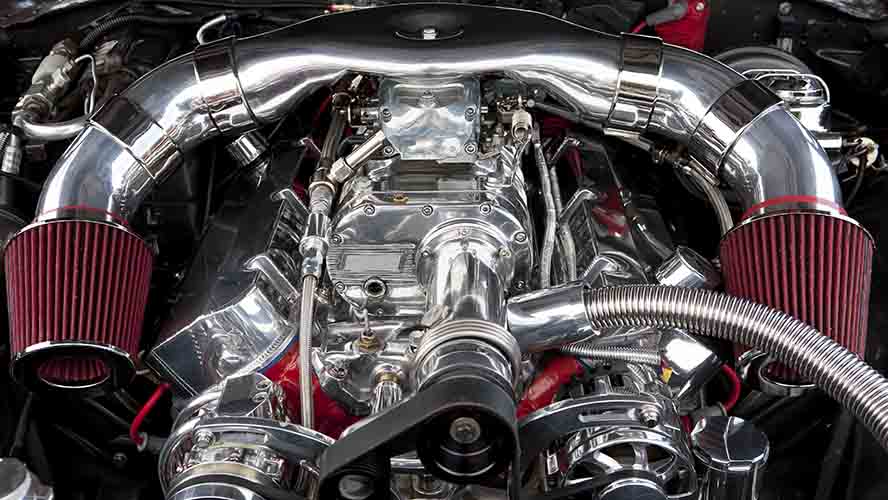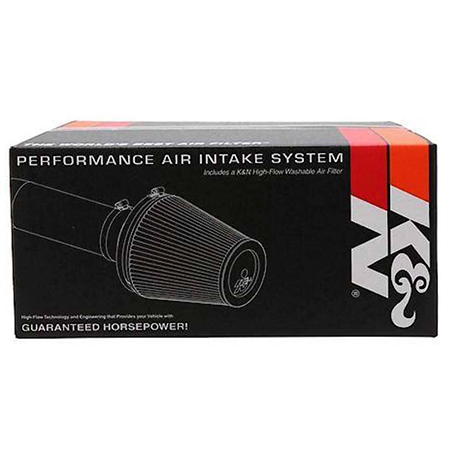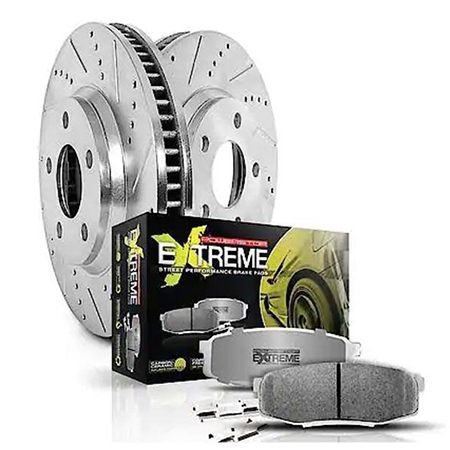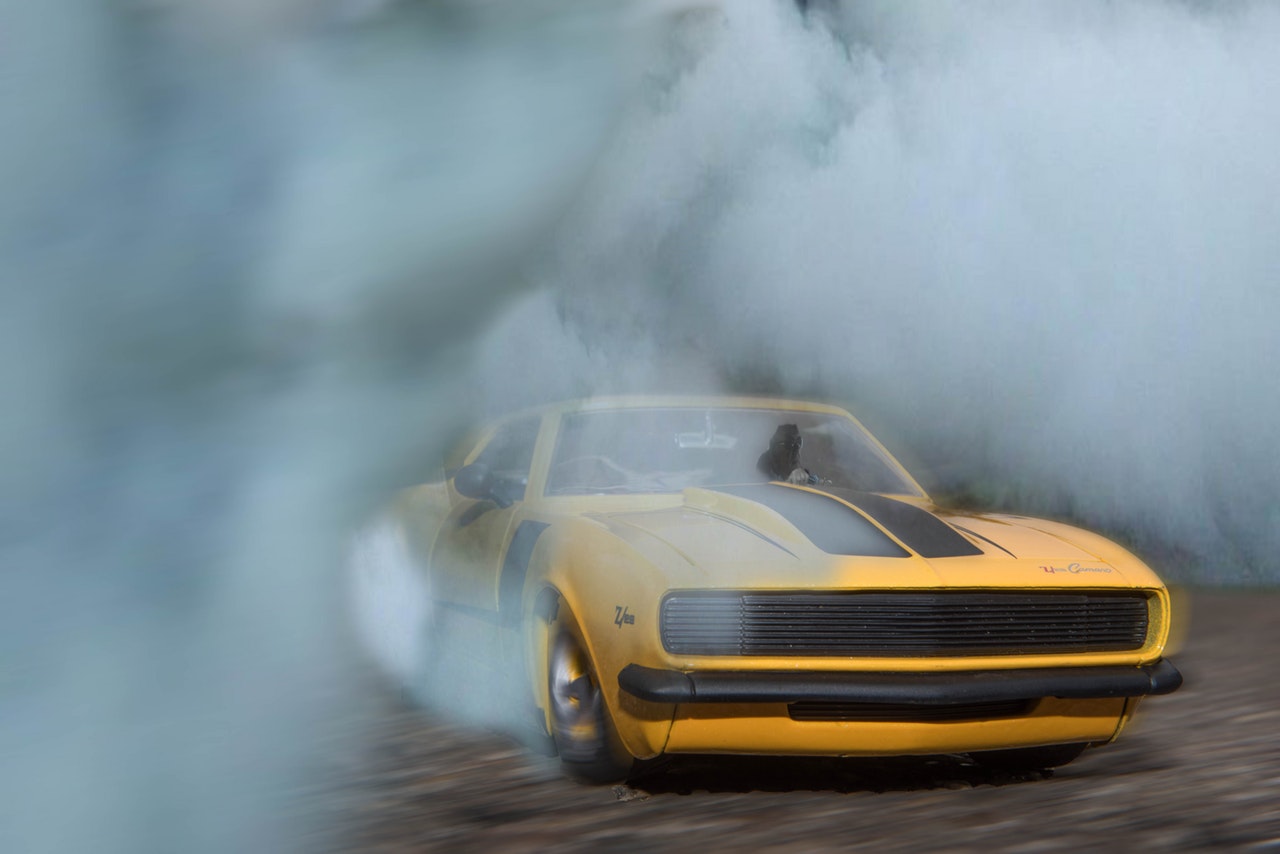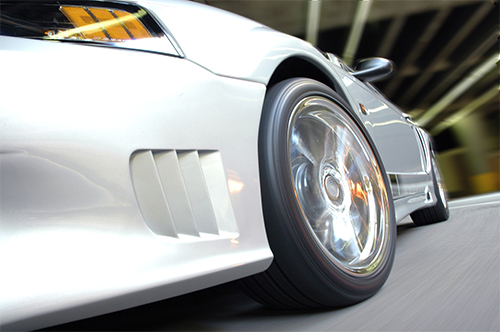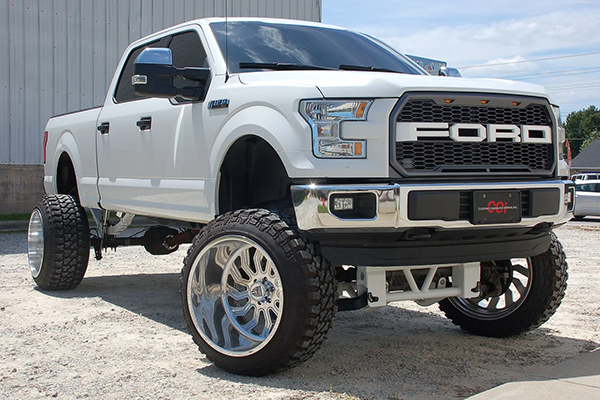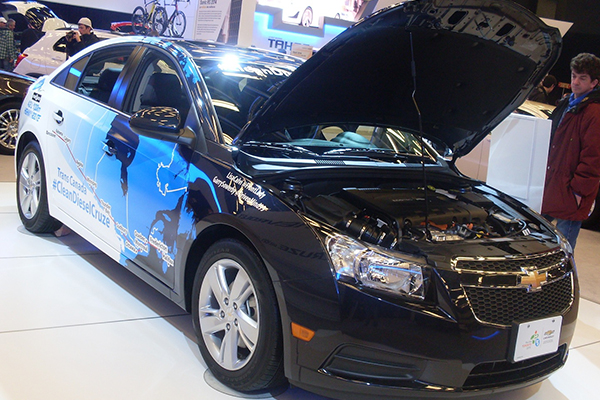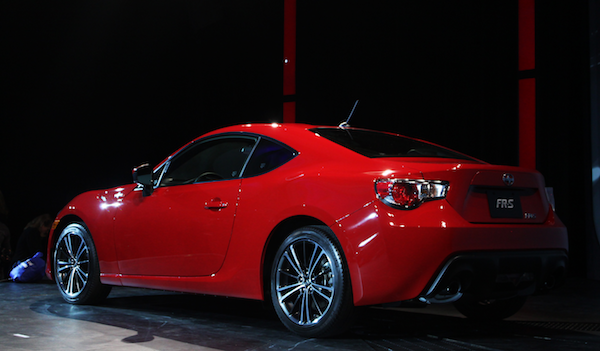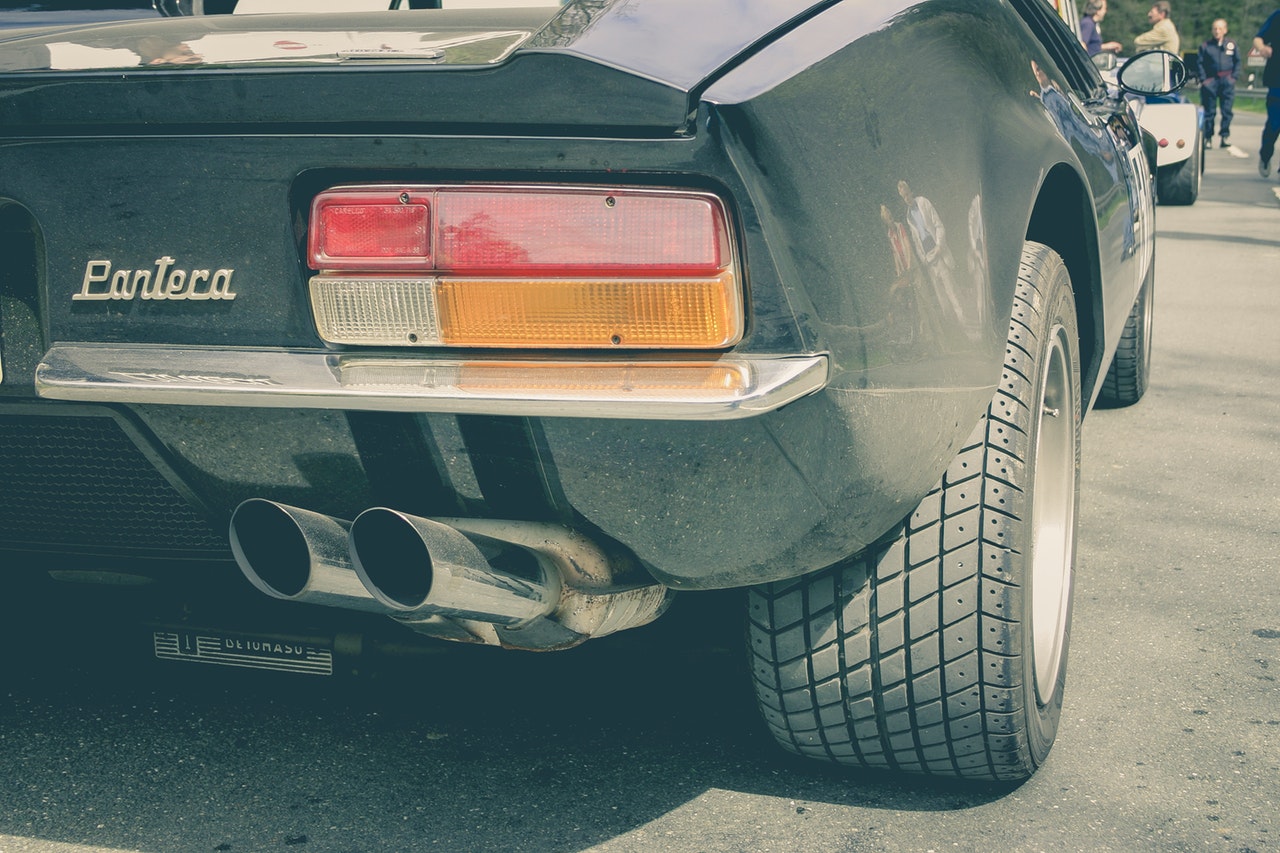Are you ready to stop fooling around with the easy, newbie mods? It's time to step up your game. We're not talking platinum plugs here, but a horsepower difference you can feel. Everything from down-pipes for your Blob-Eye WRX to blowers for your C3 'vette. This is where to start when you want to seriously upgrade your ride.
1. Forced Induction
There is no single modification that can radically increase your engine's power output and transform your ride like a turbocharger or supercharger. A Scion TC becomes a little race car for the street, and a Mustang GT becomes a fire-breathing monster. If adding 200+ horsepower sounds good, read on.
Turbocharger
We've covered in-depth how a turbocharger works, so you'll get the brief version here. Basically, exhaust gases spin a turbine, which spins a compressor that forces air at high velocity and pressure into the engine. That air ignites with an increased amount of fuel, and the result is more horsepower.
A complete turbo kit starts around $2,500 and can go all the way to $10,000, depending on turbo size, expected boost pressure, specialized coatings and more. Have a turbo equipped from the factory? That's surprisingly very common. There's all kinds of parts you can upgrade without replacing the OEM turbo. Up-pipes, down-pipes, intercoolers and more. Increasing the efficiency of the existing turbo provides more power, but leaves OEM reliability in place.
Supercharger
Superchargers work a lot like turbochargers, but with a belt-driven compressor. Boost builds early, so you never have turbo lag. Generally, superchargers give you more of a power hit low in the RPM range, while turbos need exhaust gases to build up as the RPMs increase.
Superchargers are built into or replace the existing intake manifold, so each unit matches exactly to the engine. Meaning, the supercharger that fits a LT1 5.7L won't exactly fit an LS1 5.7L. About the only maintenance issues are keeping it oiled and occasionally replacing the belt. Superchargers range from $1,600 for the very basic kits, to $5,000+ for polished units with high boost pressure.
2. Nitrous
Need 50 or more horsepower right now, but not a minute from now? If you need just a temporary boost, take a look at a nitrous kit. Nitrous oxide is a stable gas at normal temperatures, but when heated, it breaks down into a large amount of oxygen. It has a cooling effect on the air too, resulting in a much denser air charge entering the combustion chamber for a more powerful burn. Nitrous kits are somewhat universal, meaning you could have all the parts you need, but you'll likely need to buy a few extra parts to get it all plumbed in your specific engine.
Prices start at a very reasonable $500 for a NOS Snyper system and average around $800. Depending on your engine, safe might mean only a 50 or 100 horsepower increase. "Hot Rod" shows you how the install works here, calling it the easiest 142 horsepower they've ever bolted on.
That's a great gain, and with additional supporting mods, you could be running a 300 shot through your engine any time you need it. That will easily leave two black rubber marks down the entire length of the on-ramp. Keep in mind, while nitrous systems are legal to install in a daily driver, most states ban the use outside of a track, so check your state and local laws before installing. If you're into drag racing, go grab a bottle and get started.
3. Camshafts
Forced induction is great, but there are a lot of natural aspiration enthusiasts that want to see what they can do “all engine." For you, there's the performance camshaft. It's affectionately called a “bump stick" — an appropriate name, as the cam looks like a metal stick with bumps down its circumference. Those bumps are cam lobes that determine when air gets into and out of the combustion chamber by precisely opening and closing the intake and exhaust valves.
Just a mild cam change can result in 30 more horsepower at the wheels, or match it with intake and exhaust mods for a potential increase of over 100 hp. That's a great deal since performance cam kits can start as low as $150. When installing a new camshaft with more aggressive specs, engine rebuilders recommend using new lifters.
4. Cold Air Intake
More air means more horsepower. This simple idea is why performance air filters exist, and why their higher flow rate helps your engine make more power. An air filter can only do so much on its own, so help it out by swapping the restrictive factory intake plumbing for a performance cold air intake. The engine bay gets hot as you drive, so a cold air intake pulls cooler (denser) outside air into the engine. Aftermarket intakes often increase the tube diameter and straighten any unnecessary bends, too. The result is a higher velocity of denser air reaching your engine. Cold air intakes are easy to install and work too, as average dyno results commonly show a 5- to 10-hp gain without a tune.
5. Full Exhaust
Nope, we're not just talking those larger diameter exhaust tips. Those look neat, but that's about it. For a real increase in power and a quality sound (not just harsh and loud), you need a full exhaust. Rather than upgrading just the cat-back, a full exhaust is from the headers all the way back. Replace that rusty and ugly exhaust manifold with a stainless-steel header for increased flow.
It accomplishes this with larger diameter tubing and by straightening as many bends as possible. Long tube headers typically flow better than “shorties," but lowered vehicles will sometimes scrape on speed bumps and steep driveways. Headers start as low as $200, but long-tubes, larger diameters and special coatings will cost more.
If you have dual exhaust, swap the janky OEM crossover for an H-pipe or X-pipe. A high-flow catalytic convertor is the way to stay emissions and inspection legal while reducing backpressure. Then get the cat-back exhaust system for less restrictions and that excellent sound. Note: not all exhaust mods are emissions legal. Headers will need a bung for the O2 sensor, and it will need to be in the factory location.
6. Race car brakes
Look at the brakes on a Lamborghini Aventador, and you'll notice the massive carbon-ceramic rotors. They're made by infusing lightweight carbon fiber into special high-temp ceramic. Yes, it's as expensive as it sounds. Fortunately, you don't need to spend $15,000 on a brake upgrade, because the aftermarket supplies great parts for a lot less cash.
A performance brake kit includes upgraded rotors, pads, shims and hardware for installation. The pads have slotted to sweep away grit and gas buildup, so the pad stays in full contact with the rotor. The holes are the old racers saying of “speed holes," adding lightness and increasing heat dissipation. The aggressive street pads deliver stable performance, strong pedal feel and reliability after repeated stops.
There's towing kits, too, so if you do any kind of performance driving, it's time to upgrade to serious brakes. Performance brake kits start at $150 for just pads and rotors. If you want upgraded aluminum calipers, those add at least $400 to the kit. Massive brakes like the Lambo above look amazing and work even better, but even going aftermarket will cost about $2,000.
7. Road race suspension
Larger sway bars are the single best upgrade to keep your performance car flat in the corners or give your family sedan sports car handling without negatively increasing road noise or harshness. A larger diameter bar remains stiff despite the cornering forces, preventing the body lean seen in sloppy suspensions. Installation takes about an hour and can be handled by a beginner. Individual performance bars start around $200 each, but look to a matched set for the best performance, averaging $450.
For even more sports car grip in the corners, look to sport springs. Quality lowering springs cost $200 to $400. When you replace your coil springs with aftermarket ones, most will lower your ride anywhere from a half inch to 2.5 inches. Note that your suspension geometry will be out of whack with slammed sport springs, so look to adjustable control arms or relocation brackets specific to your model to fix that issue. Coilovers are the easy way for that slammed look while retaining near OEM ride quality. They start around $800.
8. Increase Fuel
“Back in my day," people upgraded Camaro fuel pumps with Corvette pumps for a cheap way to increase gallons per hour by about 50%. Fuel systems and ECUs are quite a bit more complex now, but the idea is the same. If you're doing forced induction, big cam or other performance improvements above, your fuel demands will increase.
For basic modifications like a cold air intake, the ECU can adjust fuel trim levels to match the upgraded airflow. It's only when going heavy on big performance increases that you'll need to upgrade the fuel system. Get a high-flow fuel pump so your new mods don't starve your engine of fuel. They aren't hard to replace, but it might take an entire Saturday. A high-performance fuel pump is a great upgrade, especially when matched with higher flowing fuel injectors. They are also a fairly straightforward DIY upgrade.
9. Upgrade to EFI
Speaking of fuel, if you're still running a carb on a street car, you're letting gobs of power escape as unburned hydrocarbons instead of maximum horsepower. If you have a super common engine like a Small Block Chevy V8, you could head out to the U-pull yard and find a modern-ish 25-year-old EFI system from a slightly newer SBC, and it'll swap right on. But then you're left with the era's limitations and a bunch of suspect old parts.
A new EFI upgrade kit is the way to go, with entirely new parts, a warranty, up-to-date equipment and easy-drop-in installation. Prices start around a grand, but you'll gain a lot in power, gas mileage and reliability. A 50-degree drop in temperature no longer means re-jetting the carb or struggling to get it started. Instead, just turn the key and go.
10. Tune Time
If you've done any of the above mods already, you owe your ride a tune to maximize its power potential. The computer ECU controls engine function by taking readings from all the various engine sensors and uses that info to compute the most efficient burn. The ECU won't necessarily see your new headers or cam, so you need new programming.
The old school EFI (pre-OBDII vehicles) will just need a bit of wrenching. Pry open the ECU case, remove the engine chip and swap in the new one. You're done, after a brief re-learn procedure. For modern rides (anything from the last 20 years), it's even easier with an easy retune through your OBDII diagnostic port. Yup, the same one code readers use.
Connect the tuner, select the tune and your modifications, then wait a few minutes while it retunes the ECU. Then, start it up and go. This is the affordable alternative to dyno tuning, with aftermarket tuners starting at $250. Expect about a 5% gain in power for naturally aspirated gas engines, 25% increase for gas engines with forced induction and up to 50% increase for turbo diesel engines.
Got big performance mod plans for your ride? Tell us about it in the comments below.
